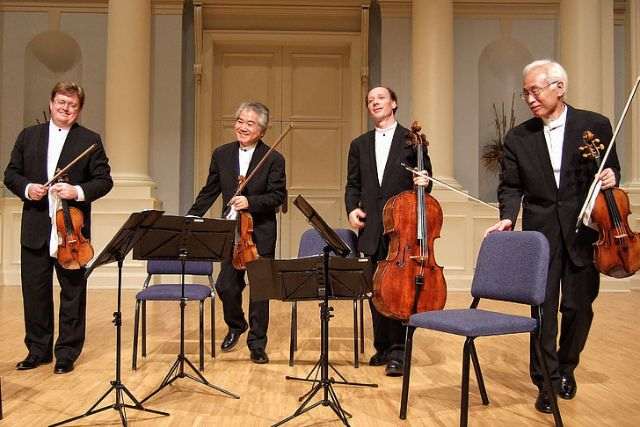We can broadly define music as arranging sound to create a combination to form melodiousness, melody, rhythm, or expressive content. Definitions of music vary depending on culture, though it is a detail of all human societies and a cultural universal. Music modeling is widely categorized into musical composition, improvisation, and musical presentation, though the topic expands into academic regimen, criticism, philosophy, and psychology. We can execute music or extemporized using various implements, counting the human voice. Music is a talent that, in one guise or another, penetrates every human society. We can hear modern music in a bewildering profusion of styles, many of them contemporary, others engendered in past eras. There are several diversified types of music.
Most Popular Types Of Music:
Today, we are going to show you the well-known music genres/types list explained in a few lines:
- Pop Music
- Hip- Hop Music
- Rock Music
- Rhythm and blues Music
- Soul Music
- Reggae Music
- Country Music
- Funk Music
- Folk Music
- Jazz Music
- Disco Music
- Classical Music
- Electronic Music
- Blues Music
- New Age Music
- Christian Music
- Traditional Music
- Ska Music
- Indian Classical Music
Pop Music:

Pop music (from English pop music, a contraction of popular music), also known commonly as pop, is a type of popular music that emerged in the late 1950s as an inference of traditional pop combined with other voguish genres at that time.
Hip-Hop Music:
Dance music style deep-seated in the USA in the 1970s as a derivative of funk and specified by its electronic base and for being linked with alternative manifestations such as break dance or graffiti. It uses a technique called “Rapping,” which is a rhythmic poem.
Rhythm and Blues Music:
Musical style was born in the 1940s as a derivative of blues and related to jazz, soul, and gospel. We can specify it by being a mainly vocal type, typical of solo singers or grouped in quartets or quintets that accompany their voice with the interventions of a choir.
Rock Music:

At the start, Rock music is a style inbred in the 1960s as a mimetic of rock and roll and highlighted by the use of compound tunes and rhythms, with justly fixed instrumentation (basically electric guitar, electric bass, keyboard and drums) and with a dynamic pattern underscored by the energy of the bass and the drums, all of which it can relate to an anti-authoritarian and offensive attitude. It has evolved many alternatives and carved a way to new practices, such as pop, punk, or heavy.
Soul Music:
Soul is a term embraced to elaborate African-American music in the United States as it advanced between the 1950s and 1970s.
Reggae Music:
We derived the musical style of Jamaican origin from rock, whose songs have characteristics like happy, repetitive, and marked rhythm, soft melodies, and committed lyrics on the side of peace, aid to the Third World, etc.
Country Music:
Country (also called country & western, country music, or country music) is a musical genre that evolved in the 1920s in the rustic regions of the South of the United States and the Maritimes of Canada and Australia. Its origins combined the folk music of some European immigrant countries, mainly Ireland, with other musical forms, such as blues and bluegrass, and spiritual and religious music, such as gospel.
Funk Music:
Musical style was inherited in the United States of America in the 1970s as black popular music derived from soul and with jazz influences, distinguished by its robust, slow, and very syncopated rhythm.
Folk Music:

Musical style was born at the end of the 1950s in the United States of America. We signaled it by the amalgam of traditional music with the forms of rock, the social content of its lyrics, and the simplicity of its composition.
Jazz Music:
Jazz is an artistic-musical manifestation originating from communities in New Orleans, in the United States. This manifestation would have appeared around the end of the 19th century in the region of New Orleans, having its origins in the popular culture and creativity of the black communities that lived there, one of its most crucial development spaces.
Disco Music:
Disco music (also known in English as disco music or, in French, discothèque) is a dance music class whose popularity peaked in the mid-1970s. Latin Americans, psychedelic music connoisseurs, and other communities in New York City and Philadelphia during the 1970s.
Classical Music:

Classical music is an erudite musical genre, marked by the twisting of instrumentation and by being represented in the form of a symphony, opera, or other types of musical developments.
Also known as “erudite music,” the beginnings of classical music can be traced back to the 9th century, based on Western Christian sacred music traditions. Its growth became more accentuated mainly during the Middle Ages (between the 16th and 18th centuries.
Electronic Music:
Electronic music is an assembly made with various electronic devices— such as synthesizers, digital recorders, software, computers, and others.
Blues Music:
We can elaborate blues as a style or musical form using low (bass) notes for expressive purposes, maintaining a repetitive musical structure.
New age Music:
New Age music is a musical genre associated with a soft melody, using instrumental sounds (harp, keyboards, flute, guitar, organ), ethereal voices, and sounds of nature.
Christian Music:

Gospel music (from English gospel; in Portuguese, “gospel”) is composed to express a belief, individual or community, predominantly Christian.
Traditional Music:
Conventional music is associated with each country with a significant ritual of genuine music from that region.
Ska Music:
Ska is a musical class that emerged in Jamaica in the late 1950s, uniting Caribbean elements such as mento and calypso and American ingredients such as jazz, jump blues, and rhythm and blues.
Indian Classical Types Of Music:
Classical music in India belongs to the region of India. It’s a complicated song that uses particular metrics and scales. We derived other pieces from here, such as el Flamenco. Also, there are four major types of classical music:
- Dhrupad
- Khyal (or Khayal)
- Tarana
- Semi-classical Thumri
Conclusion:
In the end, these categories are not encyclopedic. A music platform, Gracenote, registered more than 2000 types of music(including those created by ordinary music lovers who are not involved within the music industry; these are part of a ‘folksonomy,’ i.e., a taxonomy developed by non-experts). Music labels created most of these types to approach new audiences. However, classification helps find and allocate music.
For more interesting topic and ideas please check our website Ballet Home
